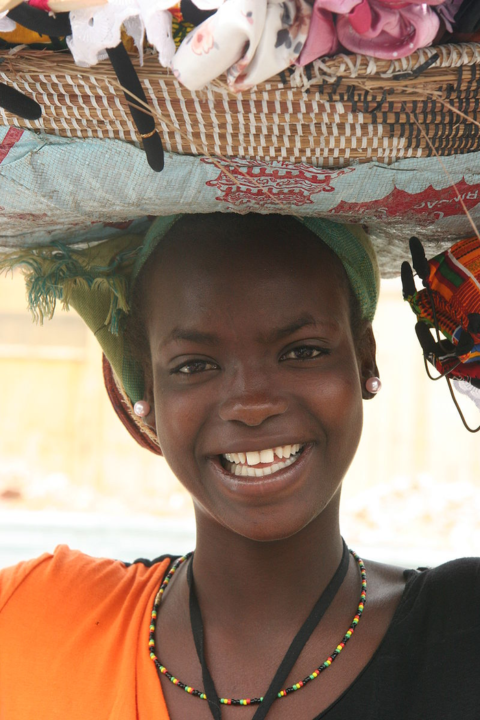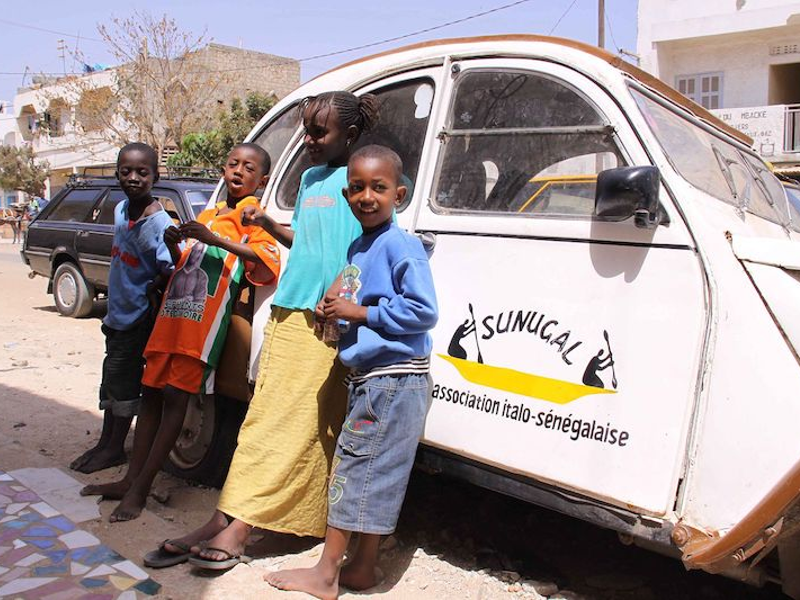Children in Dakar, Senegal. Source: Wikimedia Commons
Nestled between the Atlantic Ocean and the Sahel region, Senegal is often celebrated for its diverse landscapes, rich history, and vibrant traditions. However, beyond the tangible treasures lies an intangible gem that defines the very soul of this nation – the Spirit of Teranga. It is a cultural phenomenon deeply rooted in Senegal’s history and values, shaping how its people engage with each other and the world.
The Roots of Teranga
Teranga is more than just a word; it is a way of life. Originating from the Wolof people, the largest ethnic group in Senegal, teranga encapsulates a profound sense of hospitality, kindness, and communal responsibility. It’s not merely a practice but a philosophy that permeates every aspect of Senegalese society.
Historically, teranga has been a cornerstone of survival in this arid region. The concept emerged from the necessity of relying on one another in a harsh environment where community support was paramount. Sharing resources, providing shelter, and extending a helping hand were not just acts of kindness but essential elements for survival.
As Senegal transitioned from pre-colonial times to the present, the spirit of teranga endured, becoming an integral part of the national identity. The belief that strangers are simply friends not yet met is a testament to the enduring nature of this cultural ethos.
Teranga in Action: A Closer Look
To truly understand the Spirit of Teranga, one must witness it in action. From bustling markets to remote villages, the warmth and generosity of the Senegalese people are palpable.
Marketplaces as Microcosms of Teranga
Dive into any Senegalese market, and you’ll find an intricate dance of trade and camaraderie. Vendors greet each customer with a smile, often inviting them to share a cup of attaya, the traditional Senegalese tea. This exchange is not merely transactional; it’s an expression of teranga.
As market-goers navigate the labyrinthine alleys, they are likely to be approached by locals offering guidance or assistance. The act of helping a stranger is not seen as an imposition but as a natural extension of the community’s fabric. Teranga, in this context, becomes a living, breathing entity that binds people together in a shared experience.

Soumbediuone Fish Market, Dakar. Source: Wikimedia Commons
Family and Community Celebrations
Senegal’s social fabric is woven with the threads of community celebrations. Whether it’s a birth, marriage, or religious festival, the spirit of teranga takes center stage. Families open their homes to friends and neighbors, creating a communal space where everyone is welcome.
Guests are treated not as outsiders but as cherished members of the extended family. The preparation of meals becomes a collective effort, with individuals contributing their culinary skills to create a feast that reflects the richness of Senegalese cuisine. This communal approach to celebrations exemplifies the inclusivity and generosity that teranga embodies.
Teranga Beyond Borders
While the Spirit of Teranga is deeply ingrained in Senegal’s cultural DNA, it extends its reach beyond national boundaries. Senegalese people, known for their global diaspora, carry the essence of teranga wherever they go.
In cities across Europe, the Americas, and beyond, Senegalese communities continue to practice and promote teranga. Senegal’s national dish, thieboudienne, is often shared at communal gatherings, transforming foreign spaces into extensions of the warm hospitality in the homeland.
Furthermore, Senegal has positioned itself as a beacon of stability and hospitality in the West African region. The country has hosted numerous international events, including the World Festival of Black Arts and Culture, where the global community is welcomed with open arms, and the spirit of teranga is showcased on a grand stage.

Thieboudienne. Source: Wikimedia Commons
Teranga as a Catalyst for Tourism
In recent years, Senegal has emerged as a burgeoning tourist destination, and the Spirit of Teranga plays a pivotal role in attracting visitors. Travelers are drawn not only to the country’s natural beauty and historical sites but also to the genuine warmth of its people.
Recognizing the economic opportunities tourism presents, local communities have embraced visitors with open hearts. From the bustling streets of Dakar to the serene landscapes of Saint-Louis, tourists are greeted as honored guests. This hospitality extends beyond commercial transactions, creating an authentic and immersive experience for those seeking a deeper connection with the destination.
Preserving and Nurturing Teranga
As Senegal undergoes modernization and globalization, the challenge lies in preserving the Spirit of Teranga amidst the evolving landscape. While the country embraces progress, there is a collective effort to ensure that the core values of hospitality, kindness, and communal responsibility remain unwavering.
Educational initiatives, cultural programs, and community-driven projects promote teranga, ensuring that the next generation carries this invaluable legacy forward. By understanding the historical roots and embracing the contemporary significance of teranga, Senegal seeks to navigate the delicate balance between tradition and progress.

Salesgirl in Dakar. Source: Wikimedia Commons
Conclusion
The Spirit of Teranga shines as a beacon of hope and unity in a world often marked by division and discord. Senegal’s unique hospitality brand, deeply embedded in its cultural fabric, inspires nations seeking to foster inclusivity and communal well-being.
As the rhythms of the sabar drums echo through the vibrant streets and the aroma of thieboudienne wafts through the air, Senegal invites the world to partake in its cultural symphony. The Spirit of Teranga is not just a philosophy but a lived experience, an invitation to embrace the inherent humanity that binds us all.

Anand Subramanian is a freelance photographer and content writer based out of Tamil Nadu, India. Having a background in Engineering always made him curious about life on the other side of the spectrum. He leapt forward towards the Photography life and never looked back. Specializing in Documentary and Portrait photography gave him an up-close and personal view into the complexities of human beings and those experiences helped him branch out from visual to words. Today he is mentoring passionate photographers and writing about the different dimensions of the art world.





